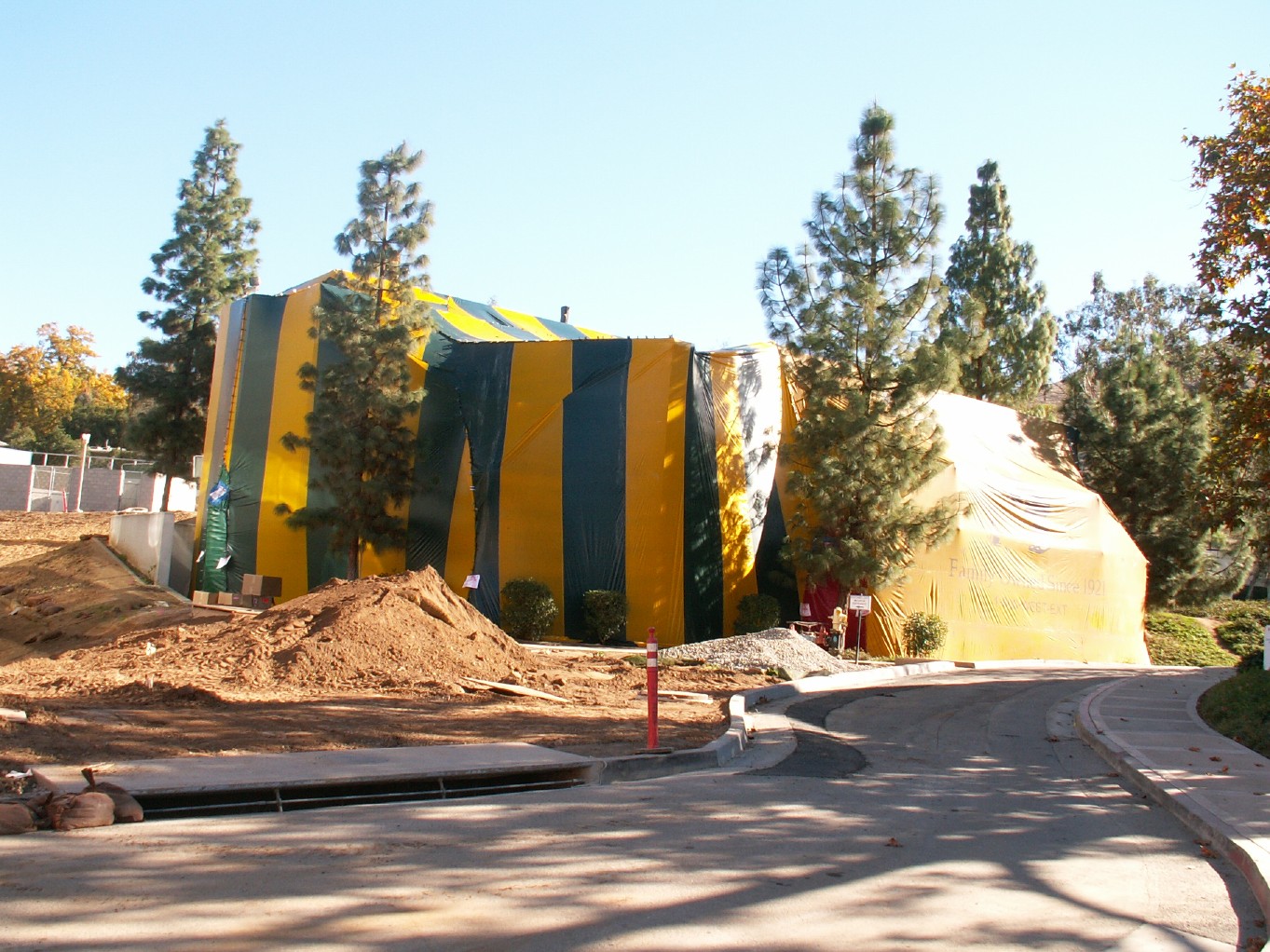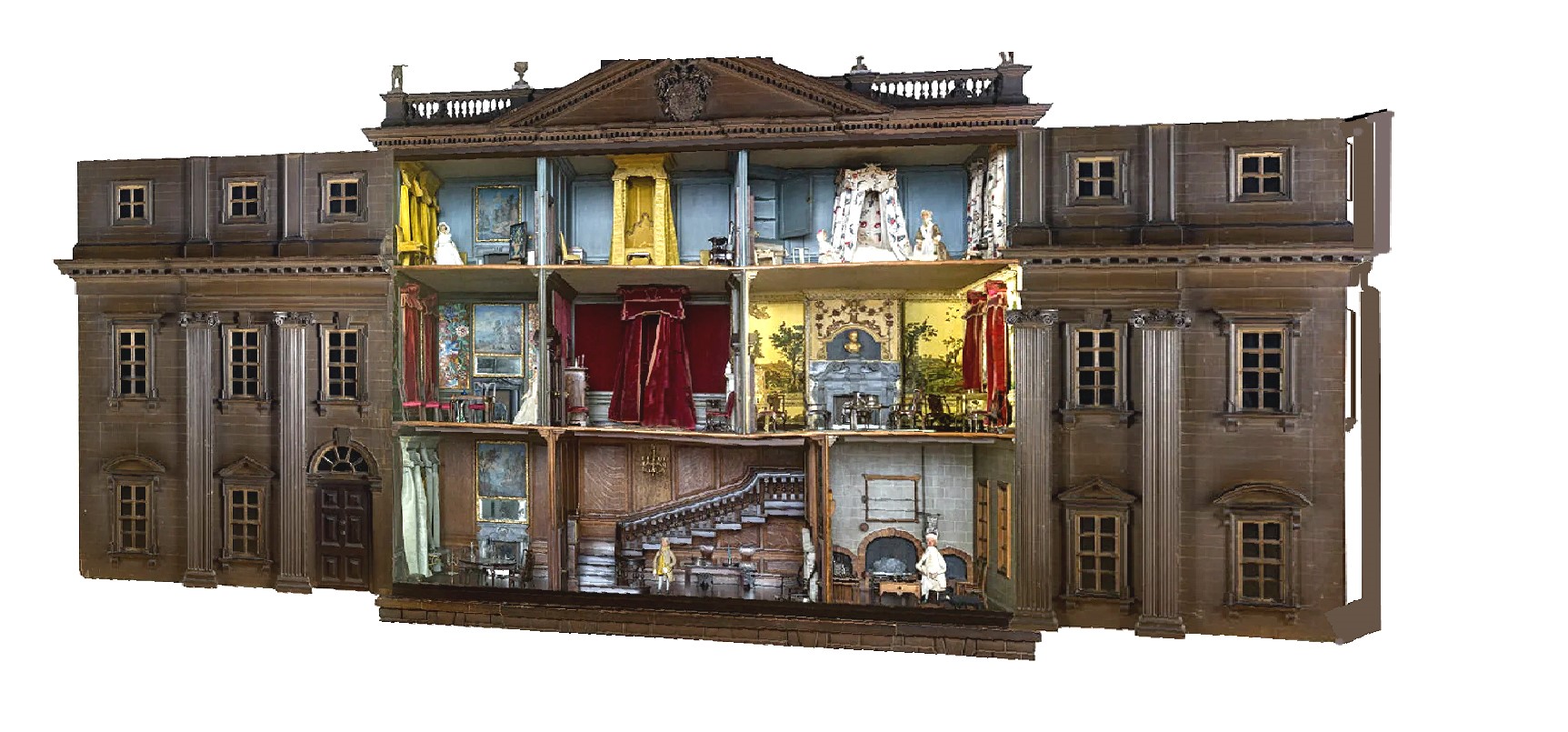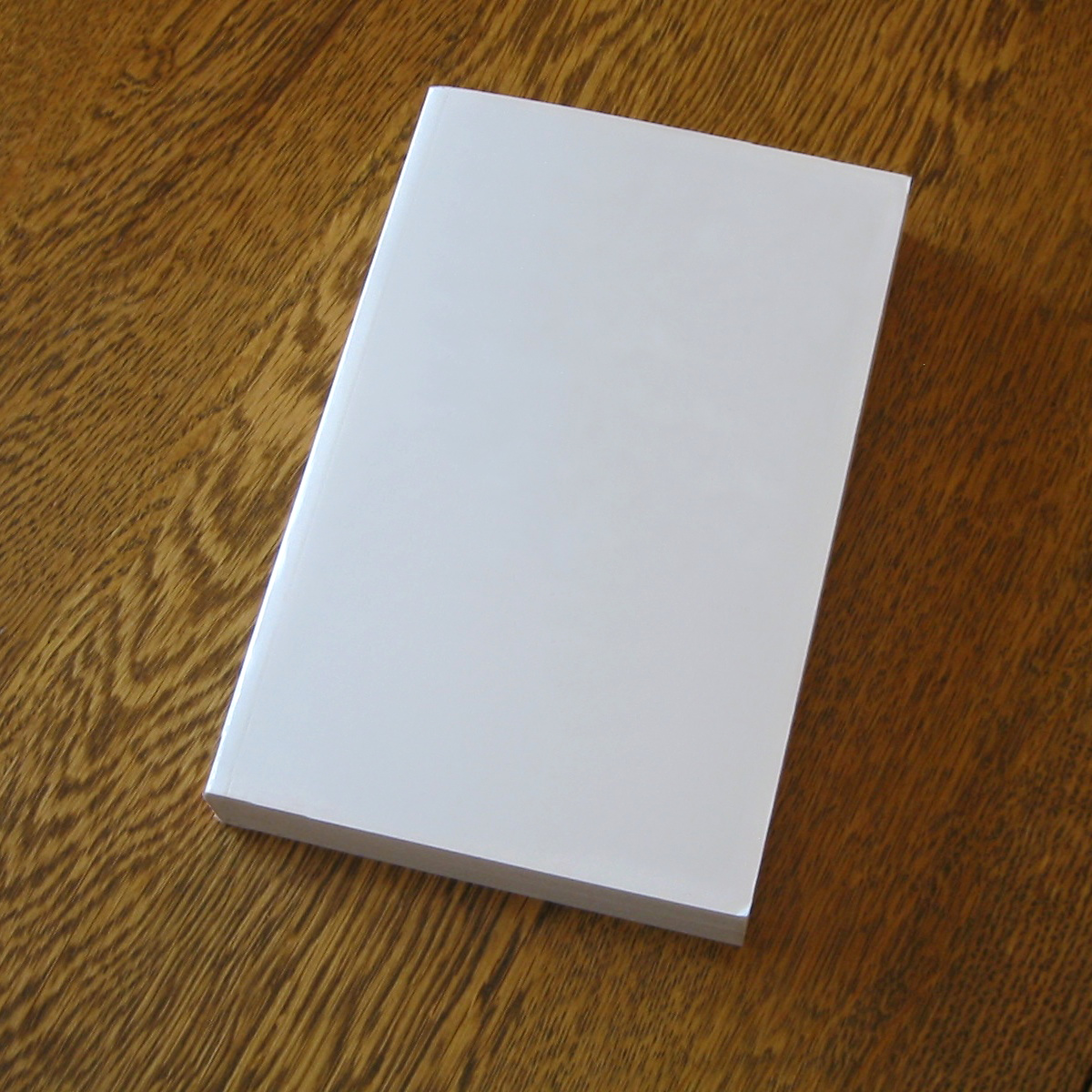|
The Borrowers
''The Borrowers'' is a children's fantasy novel by the English author Mary Norton, published by Dent in 1952. It features a family of tiny people who live secretly in the walls and floors of an English house and "borrow" from the big people in order to survive. ''The Borrowers'' also refers to the series of five novels including ''The Borrowers'' and four sequels that feature the same family after they leave "their" house. ''The Borrowers'' won the 1952 Carnegie Medal from the Library Association, recognising the year's outstanding children's book by a British author. In the 70th anniversary celebration of the medal in 2007, it was named one of the top ten Medal-winning works, selected by a panel to compose the ballot for a public election of the all-time favourite. Harcourt, Brace and Company published it in the U.S. in 1953 with illustrations by Beth and Joe Krush. It was also published in four parts, with illustrations by Erik Blegvad, during the summer of 1953 (June, J ... [...More Info...] [...Related Items...] OR: [Wikipedia] [Google] [Baidu] |
Mary Norton (writer)
Kathleen Mary Norton (née Pearson; 10 December 1903 – 29 August 1992), known professionally as Mary Norton, was an English writer of children's books."Mary Norton." St. James Guide to Children's Writers, 5th ed. St. James Press, 1999. She is best known for '' The Borrowers'' series of low fantasy novels (1952 to 1982), which is named after its first book and, in turn, the tiny people who live secretly in the midst of contemporary human civilisation. Norton won the 1952 Carnegie Medal from the Library Association, recognising ''The Borrowers'' as the year's outstanding children's book by a British author. For the 70th anniversary of the Medal in 2007 it was named one of the top 10 winning works, selected by a panel to compose the ballot for a public election of the all-time favourite. Norton's novels '' The Magic Bed Knob; or, How to Become a Witch in Ten Easy Lessons'' and '' Bonfires and Broomsticks'' were adapted into the 1971 Disney film '' Bedknobs and Broomsticks''. ... [...More Info...] [...Related Items...] OR: [Wikipedia] [Google] [Baidu] |
The Borrowers Aloft
''The Borrowers Aloft'' is a children's fantasy novel by Mary Norton, published in 1961 by Dent in the UK and Harcourt in the US. It was the fourth of five books in a series that is usually called ''The Borrowers'', inaugurated by ''The Borrowers'' in 1952. Plot With the help of their friend Spiller, the Clock family have relocated to the miniature village of Little Fordham, where everything is perfectly scaled to Borrower size. However, they are soon discovered by Miss Menzies, a kind but eccentric human woman, who reveals their existence to the village's creator, Mr Pott. Miss Menzies and Mr Pott agree between themselves to keep the Borrowers a secret, while they also prepare a special, functioning miniature cottage for them. Meanwhile, the Platters, a married couple who own a rival model village, learn of the Borrowers' existence. Fearing their own model village will be ruined, as they cannot compete with a model village with live occupants, the Platters kidnap the Clock ... [...More Info...] [...Related Items...] OR: [Wikipedia] [Google] [Baidu] |
Hallmark Hall Of Fame
''Hallmark Hall of Fame'', originally called ''Hallmark Television Playhouse'', is an anthology program on American television, sponsored by Hallmark Cards, a Kansas City, Missouri, Kansas Citybased greeting card company. It is the longest-running prime-time series in the history of television; it began airing in 1951 and aired on network television until 2014, with episodes largely limited to one film in a span of several months since the 1980s. Since 1954, all of its productions have been broadcast in color. It was one of the first video productions to telecast in color, a rarity in the 1950s. Many television films have been shown on the program since its debut, though the program began with live telecasts of dramas and then changed to videotaped productions before finally changing to filmed ones. The series has received eighty-one Emmy Awards, dozens of Christopher Award, Christopher and Peabody Awards, nine Golden Globes, and Humanitas Prizes. Once a common practice durin ... [...More Info...] [...Related Items...] OR: [Wikipedia] [Google] [Baidu] |
The Borrowers (1973 Film)
''The Borrowers'' is a children's fantasy novel by the English author Mary Norton, published by Dent in 1952. It features a family of tiny people who live secretly in the walls and floors of an English house and "borrow" from the big people in order to survive. ''The Borrowers'' also refers to the series of five novels including ''The Borrowers'' and four sequels that feature the same family after they leave "their" house. ''The Borrowers'' won the 1952 Carnegie Medal from the Library Association, recognising the year's outstanding children's book by a British author. In the 70th anniversary celebration of the medal in 2007, it was named one of the top ten Medal-winning works, selected by a panel to compose the ballot for a public election of the all-time favourite. Harcourt, Brace and Company published it in the U.S. in 1953 with illustrations by Beth and Joe Krush. It was also published in four parts, with illustrations by Erik Blegvad, during the summer of 1953 (June, J ... [...More Info...] [...Related Items...] OR: [Wikipedia] [Google] [Baidu] |
Screen Adaptation
A film adaptation transfers the details or story of an existing source text, such as a novel, into a feature film. This transfer can involve adapting most details of the source text closely, including characters or plot points, or the original source can serve as loose inspiration, with the implementation of only a few details. Although often considered a type of derivative work, film adaptation has been conceptualized recently by academic scholars such as Robert Stam as a dialogic process. While the most common form of film adaptation is the use of a novel as the basis, other works adapted into films include non-fiction (including journalism), autobiographical works, comic books, scriptures, plays, historical sources and even other films. Adaptation from such diverse resources has been a ubiquitous practice of filmmaking since the earliest days of cinema in nineteenth-century Europe. In contrast to when making a remake, movie directors usually take more creative liberties when cr ... [...More Info...] [...Related Items...] OR: [Wikipedia] [Google] [Baidu] |
Leighton Buzzard
Leighton Buzzard ( ) is a market town in Bedfordshire, England, in the southwest of the county and close to the Buckinghamshire border. It lies between Aylesbury, Tring, Luton/ Dunstable and Milton Keynes, near the Chiltern Hills. It is northwest of Central London and linked to the capital by the Grand Union Canal and the West Coast Main Line. The built-up area extends on either side of the River Ouzel (here about 2 metres wide) to include its historically separate neighbour Linslade, and is administered by Leighton-Linslade Town Council. History Foundation and development It is unclear when the town was initially founded, although some historians believe that there may have been settlement in the area from as early as 571. There are a number of theories concerning the derivation of the town's name: ‘Leighton’ came from Old English ''Lēah-tūn'', meaning 'farm in a clearing in the woods', and one version of the addition of ‘Buzzard’ was that it was added by the ... [...More Info...] [...Related Items...] OR: [Wikipedia] [Google] [Baidu] |
Fumigation
Fumigation is a method of pest control or the removal of harmful microorganisms by completely filling an area with gaseous pesticides, or fumigants, to suffocate or poison the pests within. It is used to control pests in buildings (structural fumigation), soil, grain, and produce. Fumigation is also used during the processing of goods for import or export to prevent the transfer of exotic organisms. Structural fumigation targets pests inside buildings (usually residences), including pests that inhabit the physical structure itself, such as woodborers and drywood termites. Commodity fumigation, on the other hand, is also to be conducted inside a physical structure, such as a storage unit, but it aims to eliminate pests from infesting physical goods, usually food products, by killing pests within the container which will house them. Each fumigation lasts for a certain duration. This is because after spraying the pesticides, or fumigants, only the pests around are eradicated. ... [...More Info...] [...Related Items...] OR: [Wikipedia] [Google] [Baidu] |
Dollhouse
A dollhouse or doll's house is a toy house made in miniature. Since the early 20th century dollhouses have primarily been the domain of children, but their collection and crafting is also a hobby for many adults. English-speakers in North America commonly use the term ''dollhouse'', but in the United Kingdom and other English-speaking countries the term is ''doll's house'' (or, less commonly, ''dolls' house''). They are often built to put dolls in. The history of today's dollhouses can be traced back about four hundred years to the ''baby house'' display cases of Europe, which showed idealized interiors. Smaller dollhouses with more realistic exteriors appeared in Europe in the 18th century. Early dollhouses were all handmade, but following the Industrial Revolution and World War II, they were increasingly mass-produced and became more standardized and affordable. Dollhouses can range from simple boxes stacked together used as rooms for play, to multi-million dollar structures d ... [...More Info...] [...Related Items...] OR: [Wikipedia] [Google] [Baidu] |
Sett
A sett or set is a badger's den. It usually consists of a network of tunnels and numerous entrances. The largest setts are spacious enough to accommodate 15 or more animals with up to of tunnels and as many as 40 openings. Such elaborate setts with extensive tunneling take many years for badgers to complete.Badgers.org.uk One sett in Southern England spreads over an estimated area in excess of 2,000 square metres – precise measurement has not been attempted. Another sett, in north-eastern Germany, has been shown to have been in use for over ten thousand years. Setts are typically excavated in soil that is well drained and easy to dig, such as sand, and situated on sloping ground where there is some cover. Sett tunnels are usually between beneath the ground, and they incorporate larger chambers used for sleeping or rearing yo ... [...More Info...] [...Related Items...] OR: [Wikipedia] [Google] [Baidu] |
Frame Story
A frame story (also known as a frame tale, frame narrative, sandwich narrative, or intercalation) is a literary technique that serves as a companion piece to a story within a story, where an introductory or main narrative sets the stage either for a more emphasized second narrative or for a set of shorter stories. The frame story leads readers from a first story into one or more other stories within it. The frame story may also be used to inform readers about aspects of the secondary narrative(s) that may otherwise be hard to understand. This should not be confused with narrative structure. Notable examples are the ''1001 Nights'' and ''The Decameron''. Origins Some of the earliest frame stories are from ancient Egypt, including one in the Papyrus Westcar, the ''Tale of the Shipwrecked Sailor'', and ''The Eloquent Peasant''. Other early examples are from Indian literature, including the Indian epic poetry, Sanskrit epics ''Mahabharata'', ''Ramayana'', ''Panchatantra'', Syntipas ... [...More Info...] [...Related Items...] OR: [Wikipedia] [Google] [Baidu] |
Old English
Old English ( or , or ), or Anglo-Saxon, is the earliest recorded form of the English language, spoken in England and southern and eastern Scotland in the Early Middle Ages. It developed from the languages brought to Great Britain by Anglo-Saxon settlers in the mid-5th century, and the first Old English literature dates from the mid-7th century. After the Norman Conquest of 1066, English was replaced for several centuries by Anglo-Norman language, Anglo-Norman (a langues d'oïl, type of French) as the language of the upper classes. This is regarded as marking the end of the Old English era, since during the subsequent period the English language was heavily influenced by Anglo-Norman, developing into what is now known as Middle English in England and Early Scots in Scotland. Old English developed from a set of Anglo-Frisian or Ingvaeonic dialects originally spoken by Germanic tribes traditionally known as the Angles (tribe), Angles, Saxons and Jutes. As the Germanic settlers ... [...More Info...] [...Related Items...] OR: [Wikipedia] [Google] [Baidu] |
Paperback
A paperback (softcover, softback) book is one with a thick paper or paperboard cover, also known as wrappers, and often held together with adhesive, glue rather than stitch (textile arts), stitches or Staple (fastener), staples. In contrast, hardcover, hardback (hardcover) books are bound with cardboard covered with cloth, leather, paper, or plastic. Inexpensive books bound in paper have existed since at least the 19th century in such forms as pamphlets, yellow-backs, yellowbacks and dime novels. Modern paperbacks can be differentiated from one another by size. In the United States, there are "mass-market paperbacks" and larger, more durable "trade paperbacks". In the United Kingdom, there are A-format, B-format, and the largest C-format sizes. Paperback editions of books are issued when a publisher decides to release a book in a low-cost format. Lower-quality paper, glued (rather than stapled or sewn) bindings, and the lack of a hard cover may contribute to the lower cost of ... [...More Info...] [...Related Items...] OR: [Wikipedia] [Google] [Baidu] |






